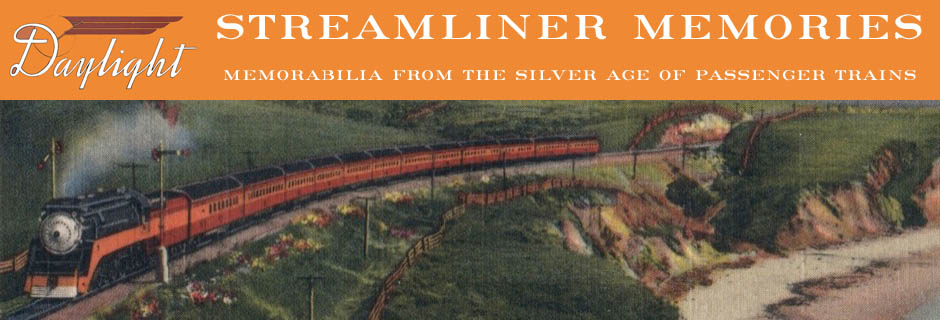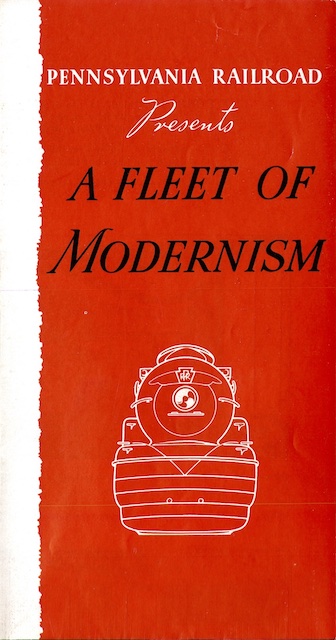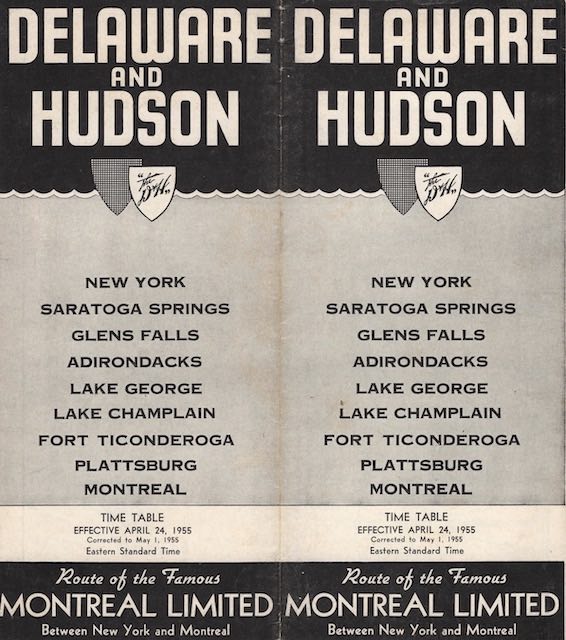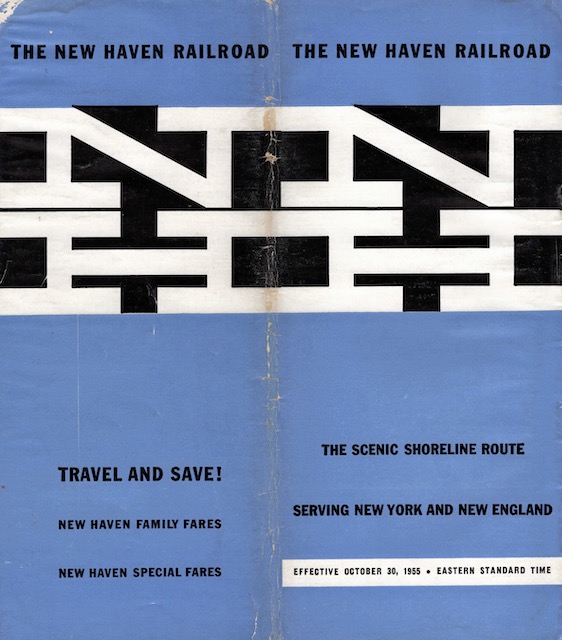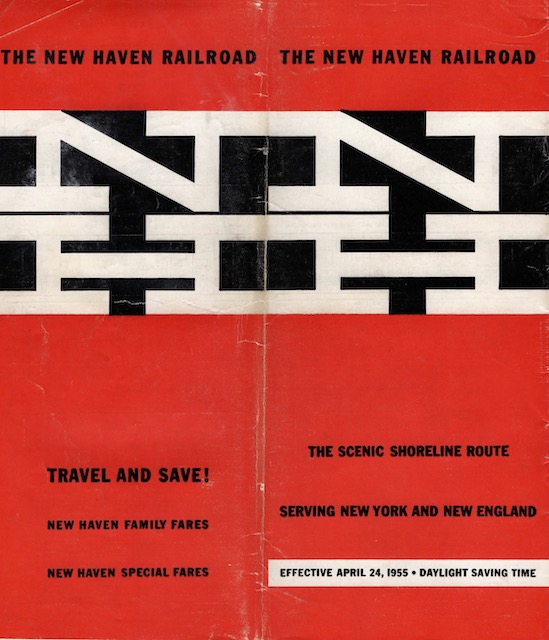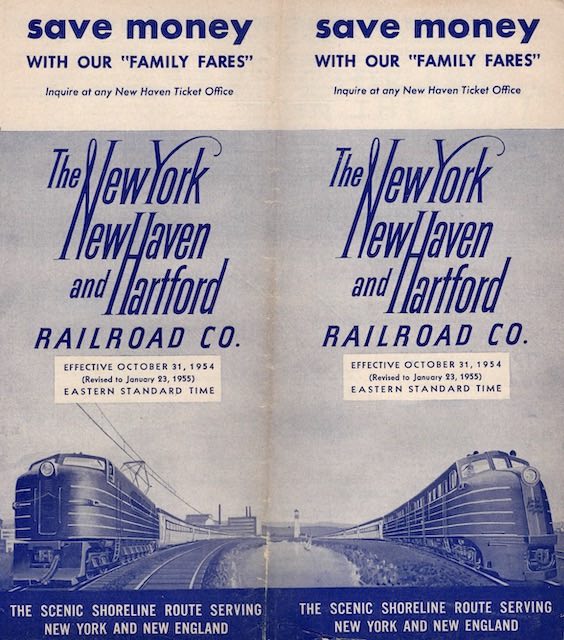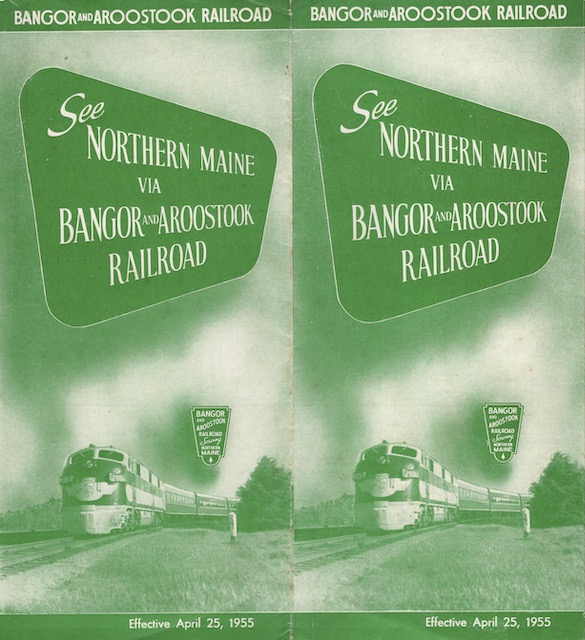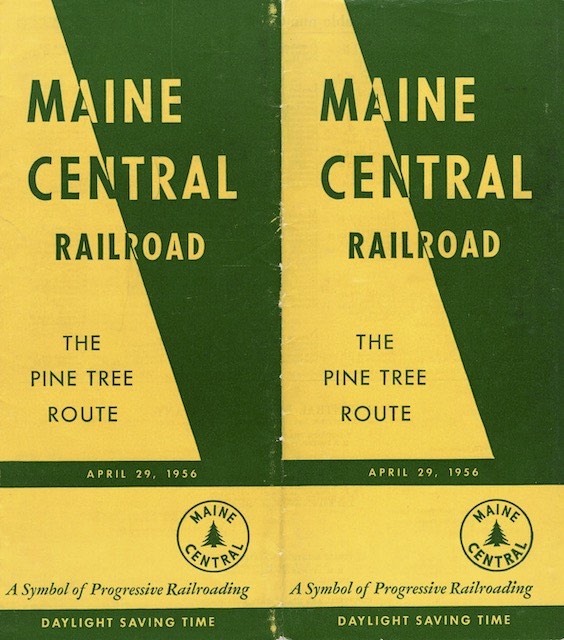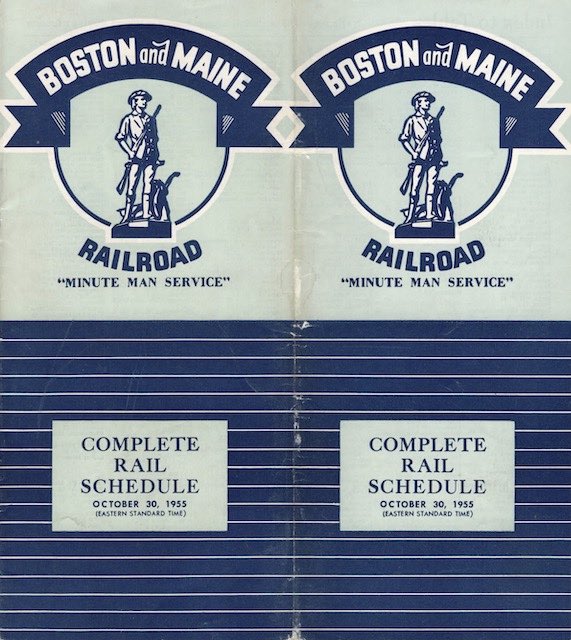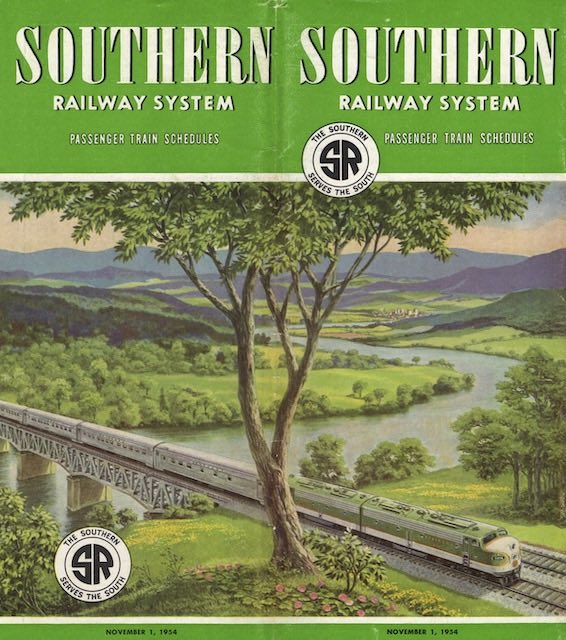If the all-Pullman Broadway Limited was a basket case before the war, the all-coach Trail Blazer was Pennsylvania’s success story. Inaugurated on July 28, 1939, the same day as New York Central’s all-coach Pacemaker, the Trail Blazer attracted 16 percent more passengers and earned 24 percent more revenue per train-mile in its first year than the Pacemaker. In its first year it also attracted 35 times as many passengers as the Broadway.
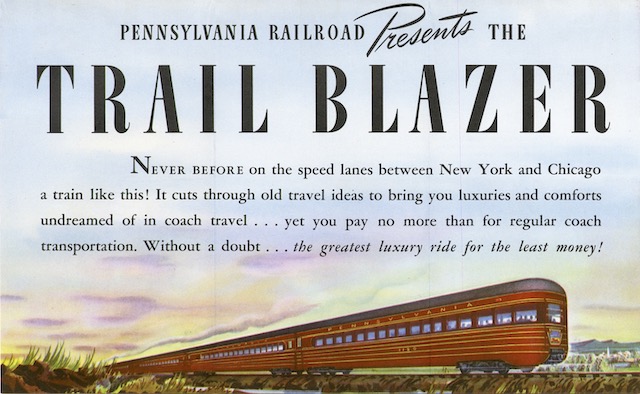
Click image to download a 2.4-MB PDF of this brochure.
The original eight-car train included a coach-baggage car, four full coaches, a kitchen-dormitory car, an entire car dedicated to dining, and a coach-observation-lounge car. These cars were rebuilt and streamlined in PRR’s own shops out of heavyweight cars. Externally, the train’s two-tone red and gold pinstripes and round-tail observation car made it nearly indistinguishable from its all-Pullman counterparts, while the Pacemaker initially used just ordinary heavyweight cars. Until 1948, the train was pulled by steam locomotives, often the Loewy-streamlined S-1 6-4-4-6 or the unstreamlined but no less impressive S-2 6-8-6. Continue reading
